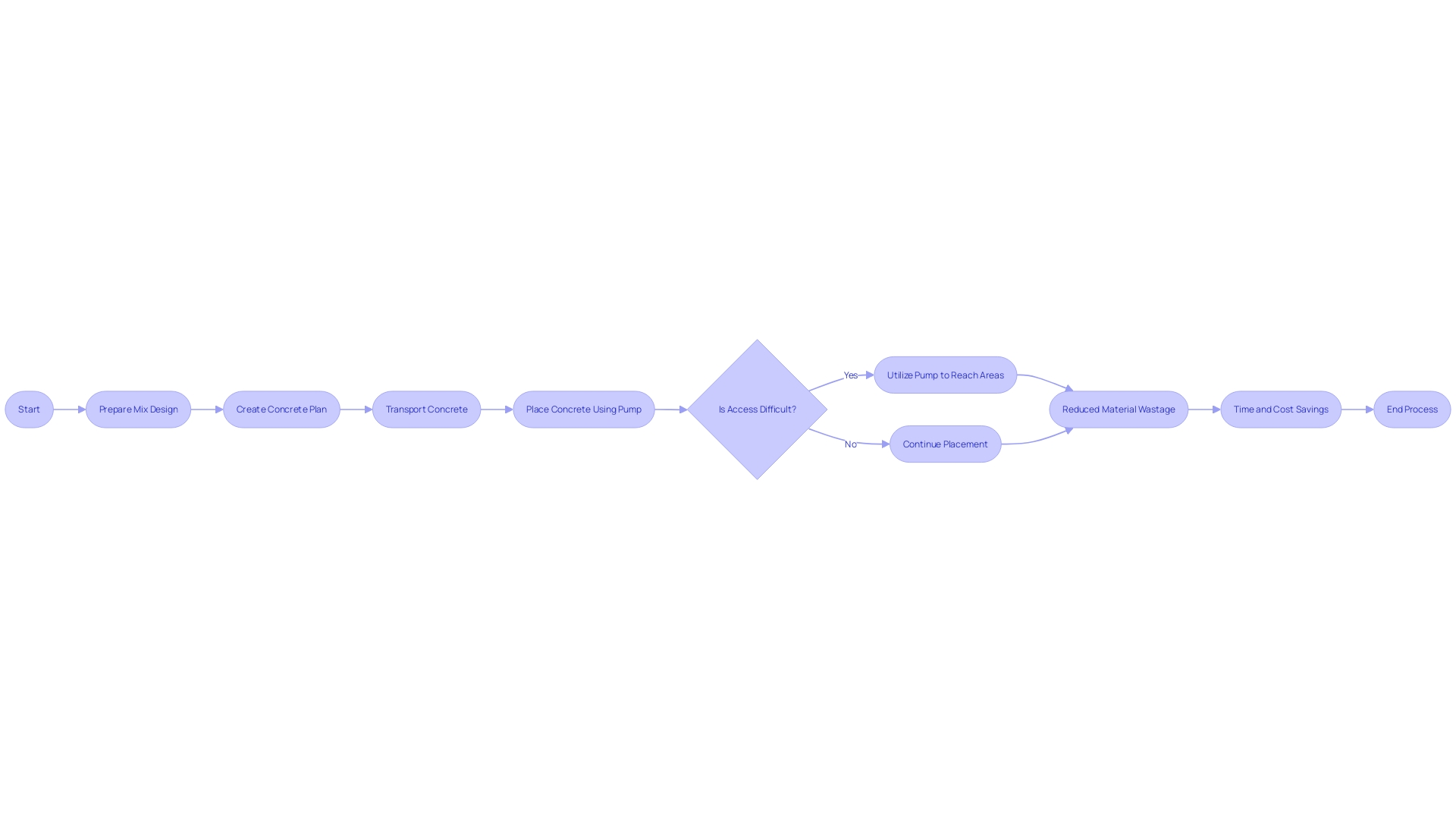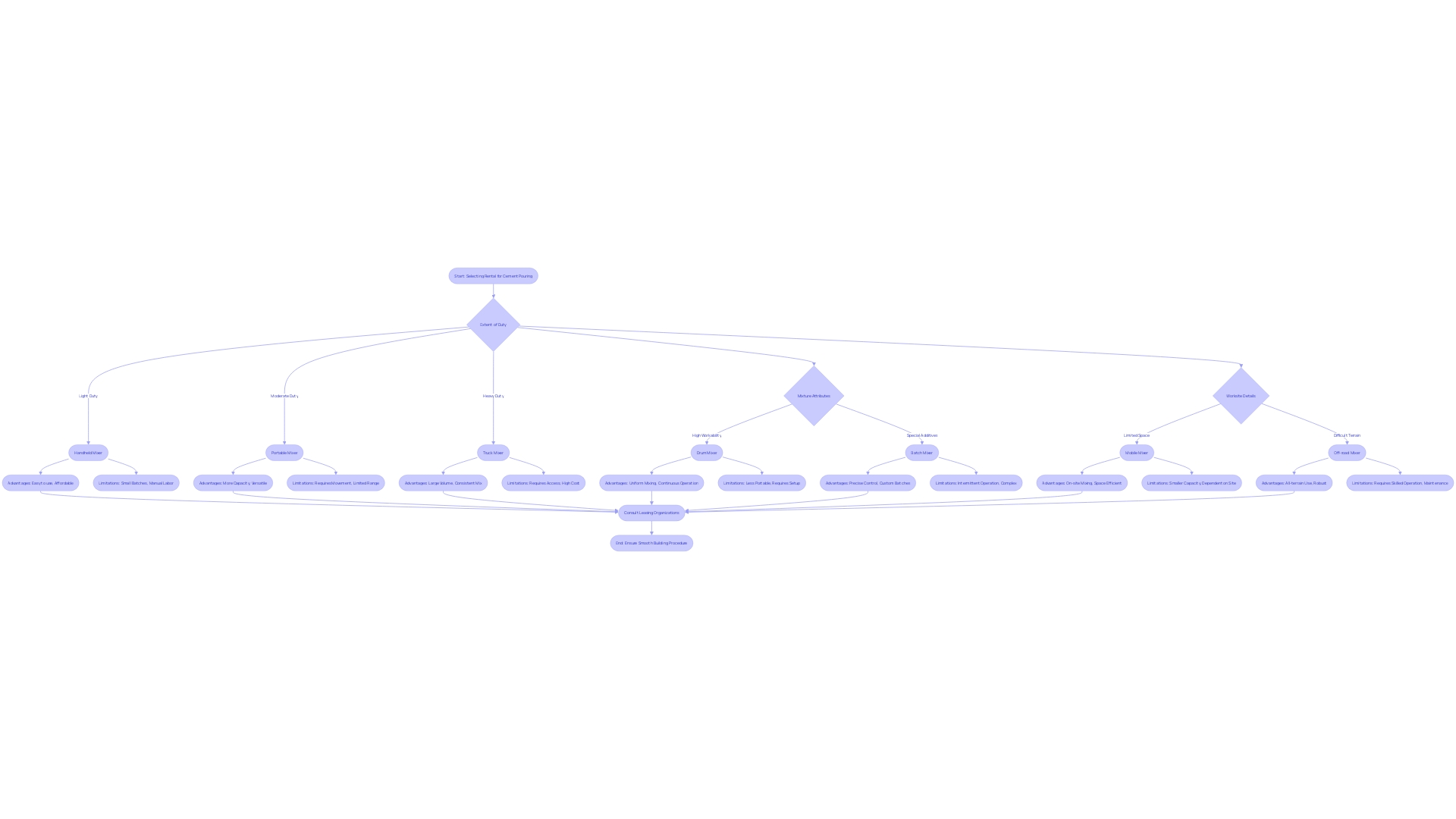Introduction
Opting for concrete pump rentals can significantly enhance the efficiency and productivity of construction projects. These advanced machines streamline the transport and placement of concrete, allowing for rapid delivery of large volumes of concrete and saving valuable time and labor costs. In addition to being cost-effective, concrete pumps also minimize material waste, making construction projects more economical and environmentally responsible.
Their unique ability to navigate through tough-to-reach areas opens up new possibilities for construction in complex environments. In this article, we will explore the benefits of concrete pump rentals, the importance of choosing the right pump for your project, the need for proper operator training and safety measures, and strategies for optimizing concrete pump utilization. By addressing these key aspects, we aim to provide valuable insights to help construction professionals overcome challenges and achieve successful outcomes in their projects.
Benefits of Concrete Pump Rentals
Choosing rentals of cement pumps can greatly improve the effectiveness and efficiency of building projects. In contrast to conventional methods that may be time-consuming and require a lot of effort, pumps facilitate the transportation and placement of cement. This advanced technique permits for the swift transport of substantial amounts of cement, conserving precious time and decreasing labor expenses. Beyond being a budget-friendly option, the utilization of cement pumping equipment diminishes the likelihood of material wastage, guaranteeing that building endeavors are financially prudent and ecologically mindful. Their distinctive capability to maneuver through difficult-to-access regions unveils fresh opportunities for building in intricate surroundings, guaranteeing that no spot is too demanding for efficient cement placement.

Choosing the Right Concrete Pump
Selecting the appropriate rental for pouring cement is a crucial choice in every building endeavor. The choice depends on comprehending the particular requirements of the assignment, including the extent of the duty, the attributes of the mixture, and the subtleties of the worksite. Concrete dispensers come in different types, such as boom dispensers, line dispensers, and specialized models for specific tasks, each with their corresponding advantages and limitations. The crucial aspect is to align the capabilities of the device - its dimensions and pumping capability - with the prerequisites of the undertaking for cement volume and the distance covered by the pumping process. For example, if the undertaking includes intricate architectural designs like those observed in the European-influenced Arbordeau condominiums, where accuracy in cement positioning is vital, the selection of equipment becomes even more important. Interacting with a leasing organization or seeking advice from a pumping expert can offer valuable perspectives, guaranteeing a selection that is in line with the objectives of the undertaking and contributes to a smoother and more effective building procedure.

Proper Operator Training and Safety Measures
To accomplish established objectives for projects, it is crucial to prioritize both effectiveness and security, particularly when it pertains to the renting of equipment for delivering cement. Handling such equipment demands not only specialized skills but also a deep understanding of the operational nuances. It's imperative that operators receive thorough training and secure the necessary certifications for the specific models of concrete pumps in use. With a shocking 46.2 percent of all fatal falls, slips, and trips in the industry dedicated to building, the significance of safety cannot be emphasized enough.
Comprehensive safety measures and guidelines are essential to preventing workplace accidents and injuries. Regular equipment inspections and diligent maintenance routines are vital components of these safety measures. Moreover, operators must always be equipped with personal protective equipment (PPE) to mitigate the risks inherent to their jobs.
Skinner Tank Co., which has been building welded steel storage tanks since 1982, acknowledges the seriousness of workplace hazards in the building sector, where nearly one in five workplace deaths occurred in 2021. This emphasizes the need for companies in the building industry to prioritize thorough operator training, adherence to safety protocols, and proper equipment handling to not only improve efficiency but also to cultivate a culture of safety that reduces downtime and safeguards lives.
Additionally, the insights provided by industry experts like Alex Hilke from Forklift Authority, who brings a wealth of experience in equipment rentals, underscore the critical nature of ensuring operators are armed with serious information and training. Adhering to these practices diligently is the most effective way to ensure the safety and well-being of workers while preserving the integrity and advancement of building projects.

Optimizing Concrete Pump Utilization
Effective utilization of cement pumps is crucial in boosting productivity on building sites. The key to harnessing this efficiency lies in meticulous planning and coordination, akin to the smooth flow of traffic that promotes constant speed and fuel efficiency, as noted by Yuji Ito of Obayashi JV. An active strategy should involve pre-planning cement deliveries in coordination with other building tasks to guarantee a smooth workflow. By doing this, contractors can effectively reduce the amount of time when the machine is not working and improve the efficiency of the device.
Furthermore, it's crucial to anticipate and adapt to various factors that may affect the pumping process, such as unpredictable weather conditions, site accessibility, and potential obstacles. The construction industry, as highlighted by recent discussions at the Lean Construction Blog's Podcast, is evolving towards managing production through Operations Science, which underscores the importance of adapting to these variables. Collaborating closely with the rental company or the operator enables a proactive identification of challenges and development of strategies to optimize the operation of the equipment.
In line with Optimotion's CEO Guillermo Guereque's approach to industrial challenges, leveraging automated solutions and real-time data can significantly impact the efficiency of concrete pump usage. By adopting innovative solutions and maintaining open lines of communication, contractors can overcome challenges and optimize their resources, which is critical as the industry navigates through an influx of infrastructure funds and the complexities of supply chain management.
Conclusion
In conclusion, concrete pump rentals offer numerous benefits for construction projects. They streamline the transport and placement of concrete, saving time and labor costs while minimizing material waste. Choosing the right pump is crucial, matching its capabilities with the project's requirements for a streamlined process.
Proper operator training and safety measures are paramount to prevent accidents and injuries. Efficient utilization of concrete pumps through meticulous planning and collaboration can drive productivity. Embracing these insights and solutions enhances efficiency, productivity, and safety in construction projects, leading to successful outcomes.




